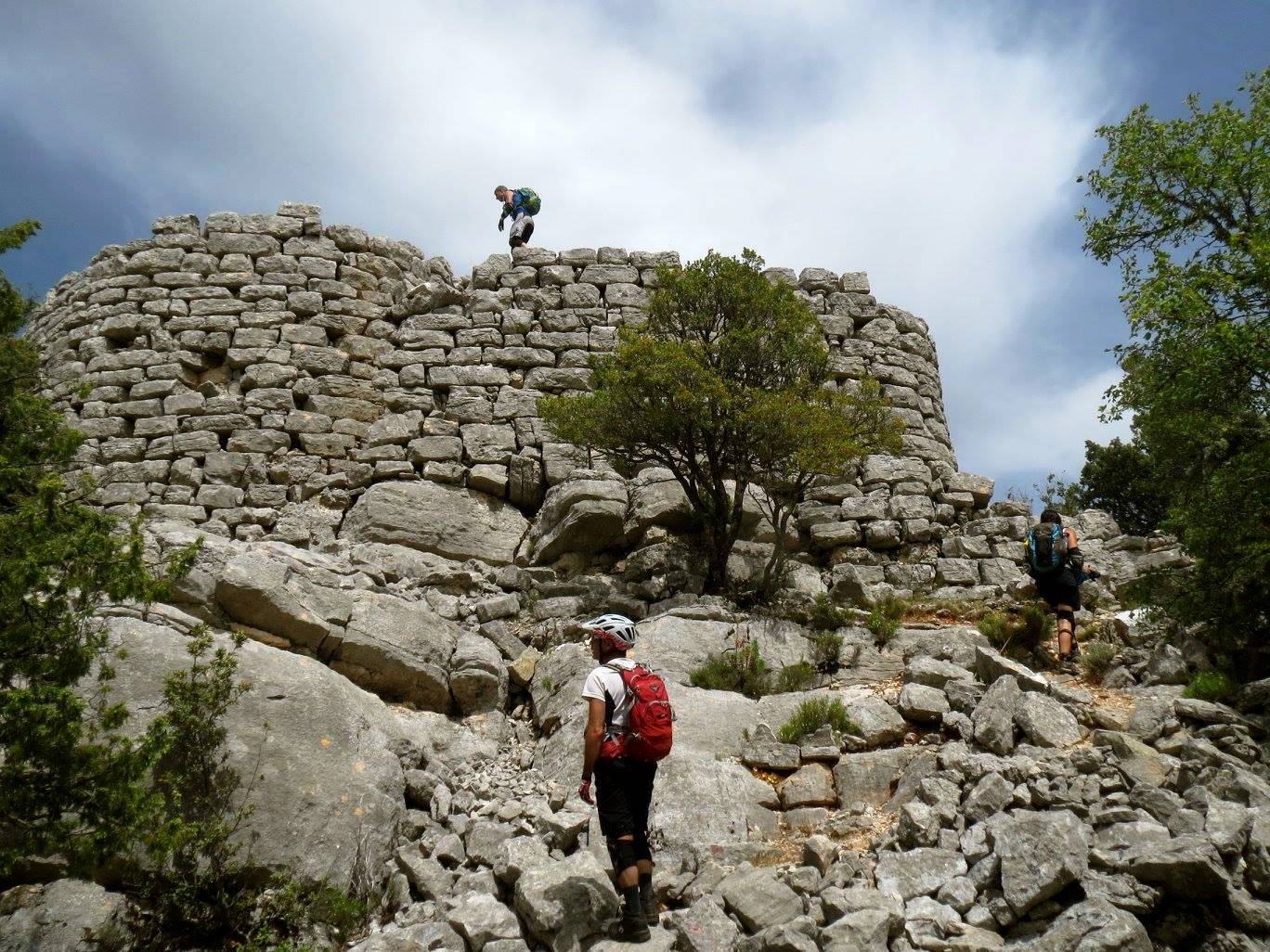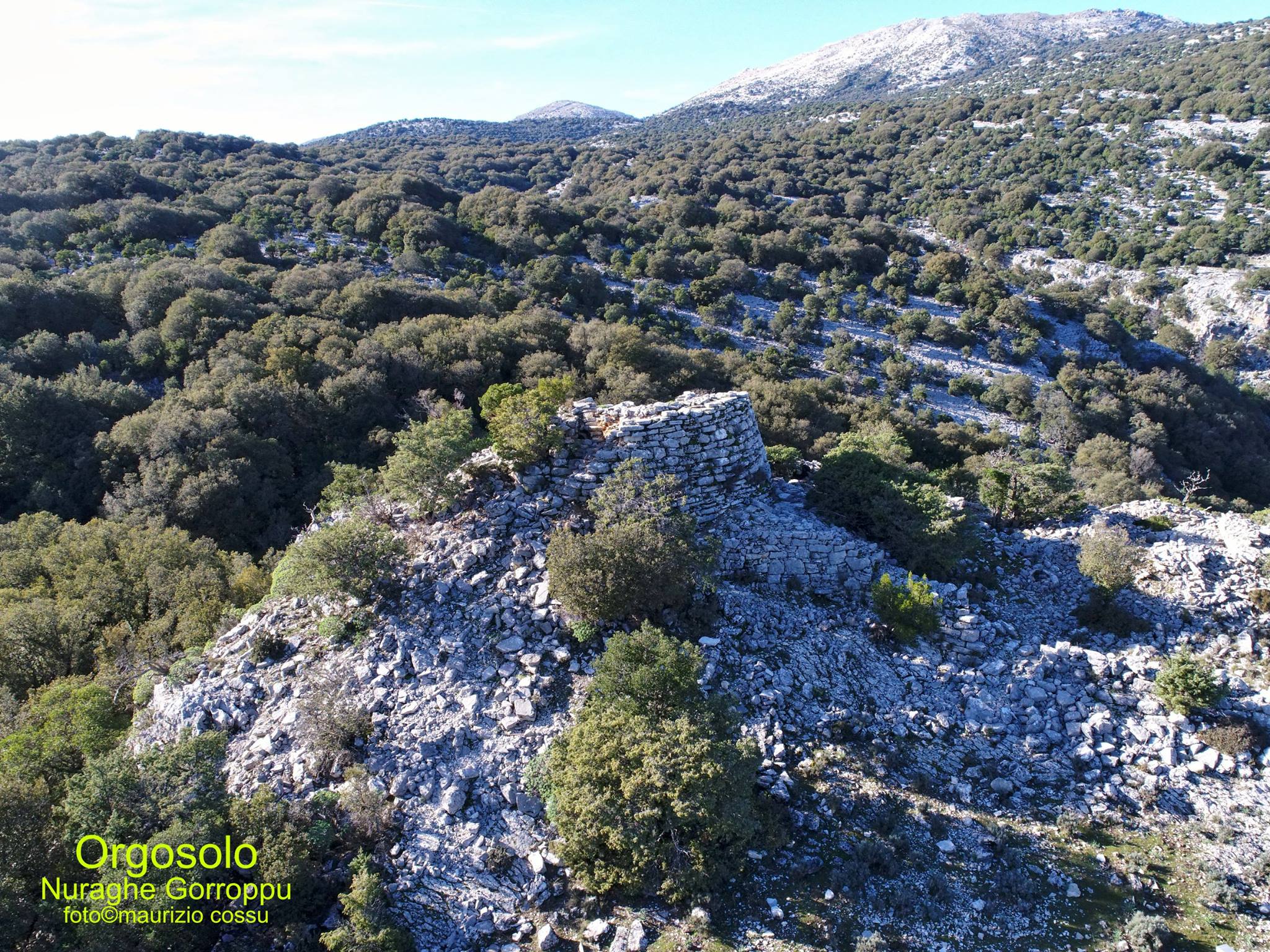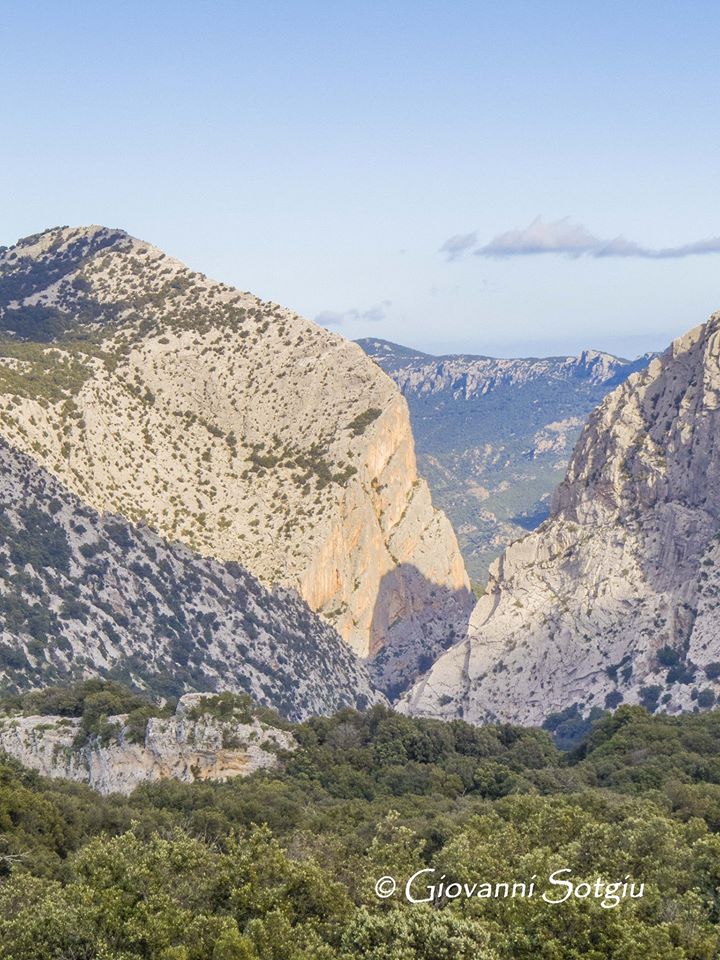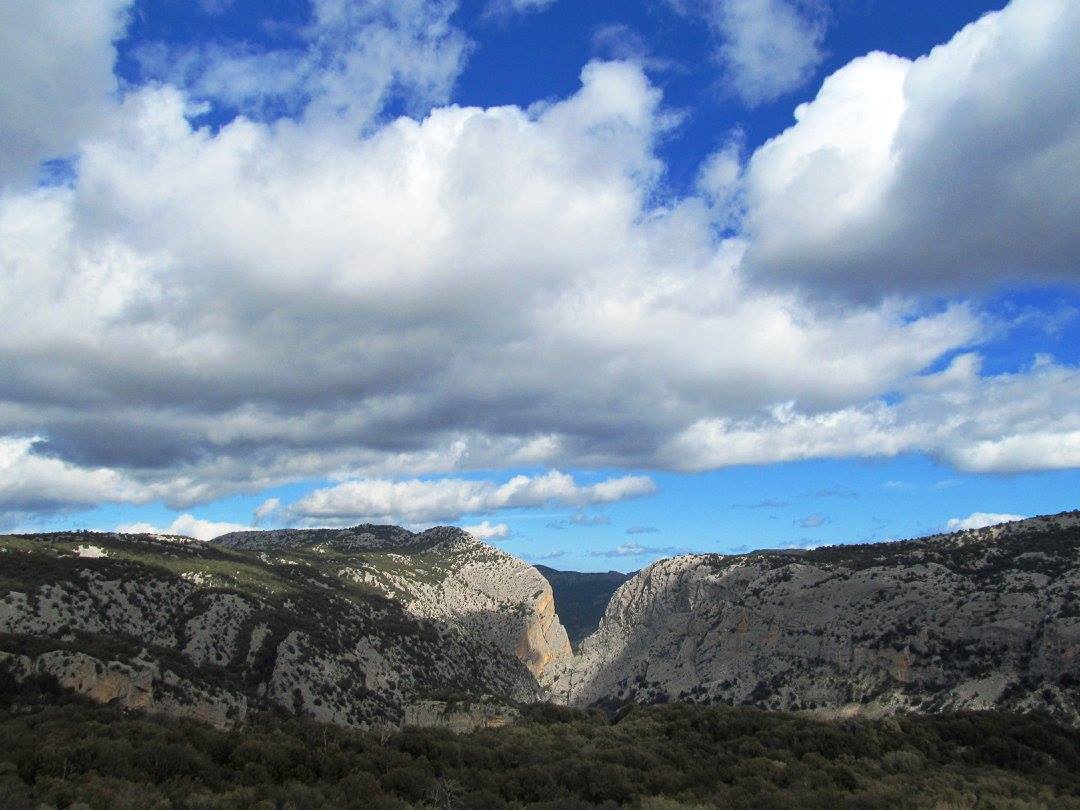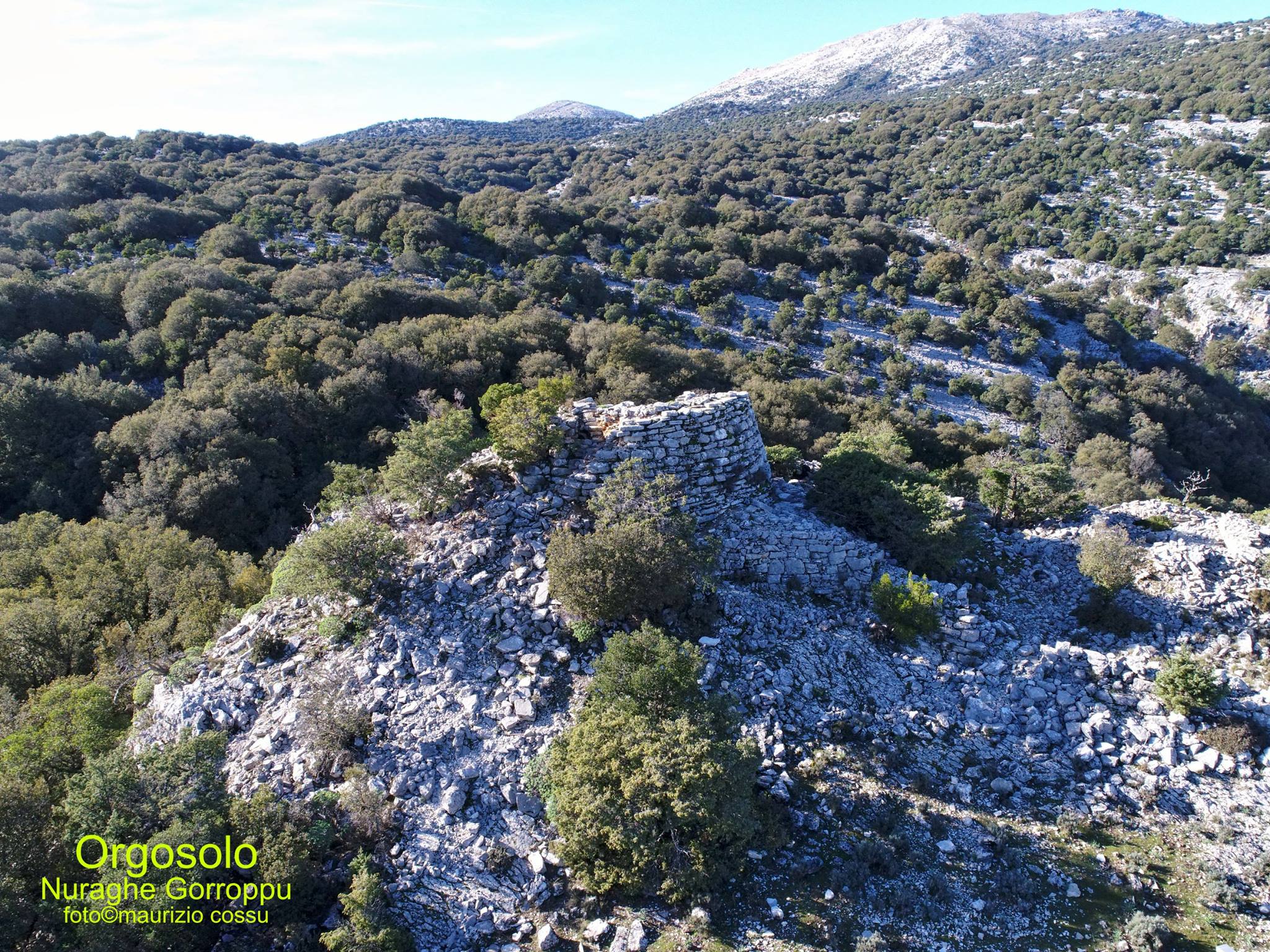The village of Presethu Tortu has disappeared, returning a myriad of stones to nature, but the two nuraghi, only 800 meters apart, are still standing and remain readable. They were nothing more than a fortified dwelling of the local “king” (at Mereu) and a large altar-sanctuary incorporated into a wide rectangular courtyard (at Gorropu). On these cliffs, the same functions of the nuragic sanctuary of Serri and the ancient nuragic site of Santu Bantine di Sedilo reappear, a “Mecca” open to pilgrims 3-4000 years ago. The meadows of Presethu Tortu undoubtedly attracted pilgrims from all over the Supramonte: from the passes of Gantinarvu, Solitta, Janna ’e Gori, Punta Gruttas, Sìlana; from the villages of Sòvana, Giulia, and Duavidda. It was a periodic gathering towards the plain of Campu Mudrecu-Su Disterru, bordered by the nuraghe and the nuraghe-sanctuary of Presethu Tortu which, down below, watched the waters converge into a triangle, an ineffable trinitarian spectacle whose grandeur brought one closer to God. The cult of waters was deeply felt in Sardinia. From one of the three gorges, marked by the dizzying walls of Cucuttos, a copious waterfall gushed (and still gushes) from a large vertical fissure, very similar to a vulva. Today it is called Cunnu ’e s’Ebba, ‘vulva of the mare’. But the reference goes to the vulva of the Mother Goddess, protector of waters and eternal excitant of the “sacred sperm” that God-Father emits by gathering clouds and unleashing the fertilizing rain. The sacred orgasm converged into the sacred wells (that is, into the “sacred vagina” that received the heavenly water), where it was worshipped; but it could also be worshipped in particularly unique natural places, in natural sanctuaries like high Gorropu, where a triangular convergence of tectonic lines gathers the waters on the grassy pebbles, which absorb them, hiding the grandiose trinitarian flow only to re-emerge immediately in a pure unitary spring. That regular triangle of gorges and waters undoubtedly recalls the three lines of the female pubis through which the fertilizing seed penetrates to then emerge from the maternal womb as a unitary epiphany of life. (from “Sentiero Italia” by Salvatore Dedola). In the shots of Cinzia Olias, Maurizio Cossu, Giovanni Sotgiu, and Ponziana Ledda, the nuraghi Mereu and Presethu Tortu (Gorroppu) and the gorge of Gorroppu seen from Mereu. The footage of the flood at “Cunnu ‘e s’Ebba” is from Voyager 7000. https://www.youtube.com/watch?v=syAPqbFtTOs